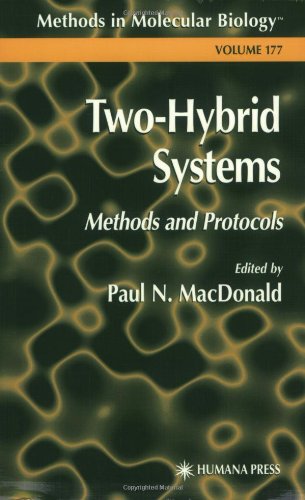

Most ebook files are in PDF format, so you can easily read them using various software such as Foxit Reader or directly on the Google Chrome browser.
Some ebook files are released by publishers in other formats such as .awz, .mobi, .epub, .fb2, etc. You may need to install specific software to read these formats on mobile/PC, such as Calibre.
Please read the tutorial at this link. https://ebooknice.com/page/post?id=faq
We offer FREE conversion to the popular formats you request; however, this may take some time. Therefore, right after payment, please email us, and we will try to provide the service as quickly as possible.
For some exceptional file formats or broken links (if any), please refrain from opening any disputes. Instead, email us first, and we will try to assist within a maximum of 6 hours.
EbookNice Team

Status:
Available5.0
27 reviewsThe yeast two-hybrid system is one of the most widely used and productive techniques available for investigating the macromolecular interactions that affect virtually all biological processes. In Two-Hybrid Systems: Methods and Protocols, Paul N. MacDonald has assembled a collection of these powerful molecular tools for examining and characterizing protein-protein, protein-DNA, and protein-RNA interactions. The techniques range from the most basic (introducing plasmids into yeasts, interaction assays, and recovering the plasmids from yeast) to the most advanced alternative strategies (involving one-hybrid, split two-hybrid, three-hybrid, membrane recruitment systems, and mammalian systems). Methods are also provided for dealing with the well-known problems of artifacts and false positives and for identifying the interacting partners in important biological systems, including the Smad and nuclear receptor pathways. To ensure ready reproducibility and robust results, each technique is described in step-by-step detail by researchers who employ it regularly.
Comprehensive and highly practical, Two-Hybrid Systems: Methods and Protocols not only reveals how the great variety of plasmid vectors and approaches may be optimally deployed, but also quickly empowers novices to establish two-hybrid systems in their laboratories, and experienced researchers to expand their repertoire of techniques.